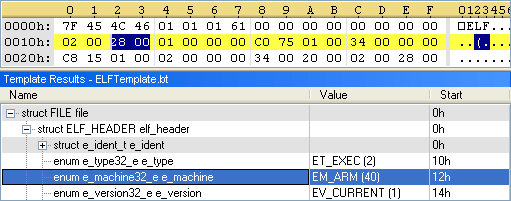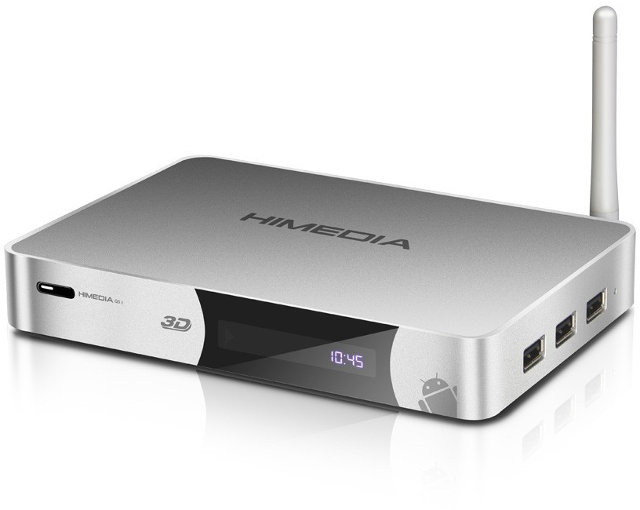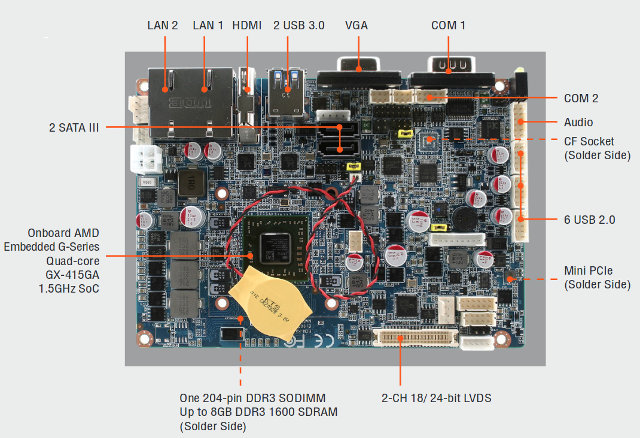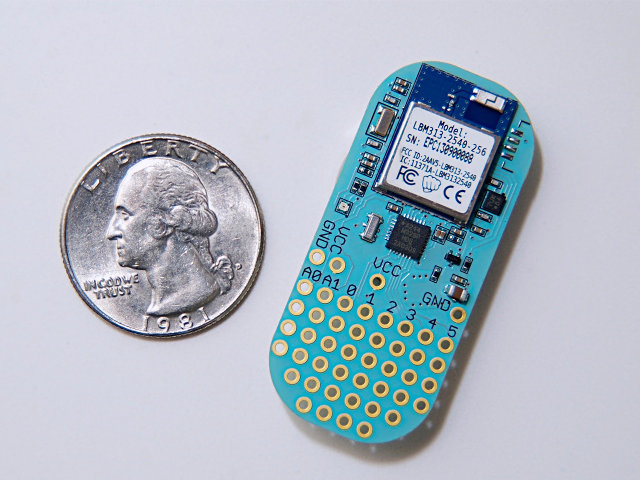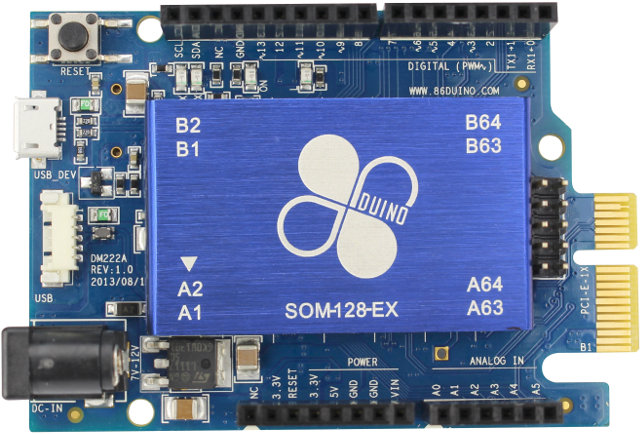Symantec has recently discovered a new Linux worm, called Linux.Darlloz, that targets Internet-enabled devices running Linux in addition to traditional computers. That means devices such as home routers, set-top boxes and security cameras could be at risk of infection, although no attacks against non-PC devices have been confirmed yet. The worm exploits an “old” PHP vulnerability, which was patched in May 2012 (PHP 5.4.3, and PHP 5.3.13), and currently only affects Intel (x86) based systems. So you’d need an embedded system powered by an Intel processor, running Linux and PHP to be at risk. Having said that, Symantec also explains code for other architectures such as ARM, PPC, and MIPS, is also present in the worm, and these systems could potentially be at risk too with small modifications. Here’s how the worm operates: Upon execution, the worm generates IP addresses randomly, accesses a specific path on the machine with well-known […]
Linaro 13.11 Release with Linux Kernel 3.12 and Android 4.4
This release includes Linux Kernel 3.12 (baseline), Linux Kernel 3.10.20 (LSK), Android 4.4 for the first time, and Ubuntu Linaro 13.11 (still based on Raring). Beside Android Kit Kat support, other noticeable updates include initial documentation for LAVA, and further work on ARMv8 support. Here are the highlights of this release: Android Engineering Android 64-/32-bit updated to 4.4 KitKat Fastboot/UEFI – Created Fastboot app design Builds and Baselines Linaro Stable Kernel 3.10.20-2013.11 released – Includes an updated big.LITTLE MP patchset Linux Linaro 3.12-2013.11 released: gator version 5.16 (same version as in 13.10 release) updated big-LITTLE-pmu, iks, iks-cpufreq, and interactive-gov-updates topics from ARM LT updated basic Capri board support from Broadcom LT (generic phy support for USB, watchdog, updated bcm_defconfig) updated big endian topic updated topic to support K3V2 board from Hisilicon LT updated Versatile Express patches from ARM LT vexpress64 support (updated FVP Base model files, added support for FVP […]
HiMedia Q5II Android STB Features HiSilicon Dual Core SoC, a 2.5″ SATA HDD Bay, and Supports XBMC Hardware Decode
Many Android set-top boxes are based on application processors mainly targetting tablets such as Rockchip RK3188, and media capabilities including video quality, and audio pass-through are not always optimal, or not working at all. On the contrary, HiMedia Q5II, an Android 4.2 media player, is powered by HiSilicon 3718 (or is it Hislicon 3716C V200?), a dual core Cortex A9 SoC designed specifically for media players. It also features an external SATA slot, HDMI and composite video output, optical and coaxial S/PDIF, and I’ve just found out the company worked on making video hardware decoding work with XBMC. HiMedia Q5II specifications: SoC – HiSilicon Hi3716C V200 dual core ARM Cortex A9 @ 1.6GHz + ARM Mali-400MP4 GPU. N.B.: HiMedia indicates the processor is Hi3718, but most resellers give specifications with a dual core processor called 3716C… Hi3718 is not listed at all in HiSilicon website, and Hi3716C is a single […]
Avalue ECM-KA SBC Powered by AMD Embedded G-Series Dual and Quad Core SoCs
Avalue Technology, a Taiwanese company manufacturing industrial and embedded single board computer, has recently announced a 3.5” SBC (single board computer) micro module, labeled ECM-KA, powered by AMD Embedded G-Series SoCs. The board will feature GX-415GA Quad-core SoC by default, with GX-217GA (1.6GHz), and GX-210HA (1.0GHz) dual core SoCs as options. The board targets the embedded market with applications such as industrial controls & automation, gaming (e.g. slot machine, aracade), thin clients, retail/ digital signage, SMB storage server, surveillance, medical, communication, entertainment, and data acquisition. ECM-KA Specifications: SoC – AMD Embedded G-Series Quad-core GX-415GA @ 1.5GHz SoC with on-chip Radeon HD 8400E GPU (Optional GX-217GA 1.6GHz/ GX-210HA 1.0GHz) System Memory – One 204-pin DDR3 SODIMM Socket Supports Up to 8GB DDR3 1600 SDRAM Storage – 2x SATA III and SSD One CompactFlash Type I/II Socket (Support InnoDisk CF-SATA). Expansion – 1x Mini PCIe (mSATA Supported) I/O MIO – 1 x […]
Jolla Sailfish OS Smartphone Is Now Officially Available
Jolla opened pre-order for the Jolla phone, the first phone based on Sailfish OS, in May this year, but the phone official launch took place yesterday in Finland with just 450 Jolla phones available out of the over 50,000 pre-orders. In May, Jolla hardware specifications were incomplete, but the company has recently released the full details, as you can see below. Jolla specifications: SoC – Qualcomm Snapdragon 400 dual core processor @ 1.4GHz + Adreno 305 GPU System Memory – 1GB RAM Storage – 16GB NAND flash + microSD slot Display – 4.5″ IPS qHD (960×540) display, 5-point multi-touch with Gorilla 2 Glass Network – GSM/3G/4G LTE (Works on 6 continents) with micro SIM Connectivity – WLAN802.11 b/g/n @ 2.4GHz, Bluetooth 4.0 EDR HS, AGPS & GLONASS Camera – 8MP AF camera with LED flash, 2MP front-facing camera USB – micro USB 2.0 HS Audio – 3.5mm audio jack. microphone, stereo […]
How to Fix Slow GPS Lock on Mediatek MT65xx based Smartphones
I’ve recently purchased ThL W200, an Android 4.2 smartphone powered by Mediatek MT6589T quad core processor, and I’m trying to test a few things including GPS. I’ve enabled access to my location, GPS, and Google’s location service using Wi-Fi and mobile network. In Google Maps, I could get a somewhat accurate position thanks to mobile network location, but it was clear it could not lock GPS. I’ve also tried Nike+ Running, an application that keeps track of your running sessions with GPS, gives you some audio feedback as you run (distance, time and speed), and compares your performance to the average, and your social network friends. When I wanted to start running, the app complained about weak GPS signal, and tried to lock GPS for about 10 minutes, until I decided to give up. So I tried to find a solution, and Google pointed me to an article on Gizchina […]
LightBlue Cortado is an Arduino Compatible Board Programmed Wirelessly via Bluetooth LE (Crowdfunding)
We’ve already seen several Bluetooth Low Energy (BLE) Arduino compatible boards being crowd-funded such as RFDuino and BLEDuino, but there’s now another board designed by Punch Through Design: LightbBlue Cortado. The board is programmed wirelessly directly via Bluetooth LE, instead of USB as in the two aforementioned boards, which means programming via iPad or Android tablets becomes more convenient. Here are the technical specifications of the board: MCU – Atmel ATmega328P @ 8MHz with 32KB Flash, 1KB EEPROM, 2KB SRAM Bluetooth – LBM313 Module with Texas Instruments CC2540, 256 KB Flash. Bluetooth range: 30.5m. Power consumption in sleep mode: 0.9μA I/O – 4 PWM pins, 2 Analog inputs, 8 GPIO, I2C and SPI Sensor – 3-Axis Accelerometer Misc – RGB LED, protoboard section, adhesive backing Power – Coin cell battery. Battery life exceeding one year for low power applications There’s no USB, so the only way to program the board is via […]
$39 86Duino ZERO is an x86 Arduino Compatible Board that Supports DOS, Windows, and Linux
Intel Gallileo Development Board with a Intel Quark processor, and Arduino software and hardware, now gets some competition with DM&P Electronics’ 86Duino ZERO board powered by the company’s Vortex86EX processor and 128MB RAM, that is said to support DOS, Windows, and Linux. 86Duino ZERO Specifications: Processor – DM&P Vortex86EX 32-bit x86 processor @ 300MHz System Memory – 128MB DDR3 Storage – 8MB SPI flash, and microSD card slot Connectivity – 10/100M Ethernet (at the back of the board, not RJ45) USB – USB host connector, micro USB port for development Arduino Leonardo compatible headers Misc – Reset button, PCIE bus Power Supply – DC-IN 7 to 12V, or via microUSB port. The board is comprised of a daughter board (DM-222) and a System-on-Module (SoM) either called DM-205 and or Vortex86EX SOM-128-EX which the following specs (some of which are not accessible in 86Duino Zero): Processor – Vortex86EX @ 300MHz System […]


